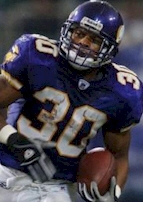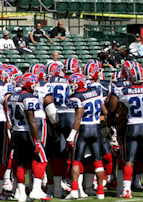USAFL Schemes TURN 50!!!
"I will not rest nor recommend we set sail until I feel absolutely confident that any team, with the right combination of personnel can win with any of the 6 offensive or 3 defensive plans on any given Sunday."
- Todd Ricotta
And so the vision was born
 It's hard to believe that 50 seasons ago, in 2010, the USAFL debuted its proprietary mix of Profiles, Plans and Plays (PPPs). Over the years the league has received many an inquiry from visitors to the league about releasing the PPPs for use in other leagues across the internet, but the schemes are one of the many facets of the league that keep it unique, and each request has been respectfully declined as a result.
It's hard to believe that 50 seasons ago, in 2010, the USAFL debuted its proprietary mix of Profiles, Plans and Plays (PPPs). Over the years the league has received many an inquiry from visitors to the league about releasing the PPPs for use in other leagues across the internet, but the schemes are one of the many facets of the league that keep it unique, and each request has been respectfully declined as a result.
For the next two weeks, in a 4 part series,
Page2 will take a look back at the last 50 seasons of the USAFL, noting trends and coaching styles that defined decades, and even eras. Which defense was in vogue in the 20's? What offense is coming back into style?
Page2 also examines the impact that the schemes had on the league psyche itself, with an opinion piece studying the impact the changes had on player personnel decisions and the ability for GMs to approach such decisions with more strategy than ever before.
Today, as part 1 of a 4 part series on how the USAFL reinvented itself 50 seasons ago, we look back at:
THE BIRTH OF THE USAFL SCHEMES
The USAFL has always prided itself in creating the most realistic football simulation on the net. With the fine contribution from the fathers of the
VPNFL System for
FBPRO, and a little elbow grease, in 2010 the USAFL established a menu of game plans that each GM has at their disposal to make a run at the Sundby Cup. The development and implementation of the USAFL Schemes was pursued with the following goals in mind:
1. MINIMUM VARIABILITY of effectiveness between schemes
2. IMPROVED OFFENSE, to include:
a. higher rushing averages (pre-USAFL Schemes average is 2.5 yards per carry, goal of 3.5 established)
b. improved passing game, to include:
* increased completion percentages (pre-USAFL Schemes average is 50%, goal of 55% established)
* improved yards per game (pre-USAFL Schemes average is 215, goal of 250 established)
 3. REALISTIC STATISTICAL
OUTCOMES 3. REALISTIC STATISTICAL
OUTCOMES
Both on the whole, as well as from scheme to scheme (i.e. a west coast offense with higher completion percentage but lower yards per attempt, a power running game that has higher yards per rushing attempt but a more limited passing game, or a 3-4 defense that although is not fancy, gets the job done with sound defensive strategy and tendencies)
The USAFL endeavored upon a rigorous testing methodology for the 6 offensive and 3 defensive schemes designed for the league that was comprised of simming in excess of 5,000 games over a 2-month period. All testing involved various league sizes with uniform team composition and league settings.
Testing of the final set of game plans involved simming 2 14-game seasons and produced incredible similarity in performance and outcomes between schemes (GOAL 1) and demonstrated significant improvements in realism in comparison with aggregate data for the 2006 and 2007 USAFL Seasons (GOALS 2 and 3). The new schemes were finally ready to be introduced!
NEXT
INSTALLMENT:
Part 2 in a 4 part series on how the USAFL reinvented itself 50 seasons ago:
"STATISTICS, THEN AND NOW"
|
 It's hard to believe that 50 seasons ago, in 2010, the USAFL debuted its proprietary mix of Profiles, Plans and Plays (PPPs). Over the years the league has received many an inquiry from visitors to the league about releasing the PPPs for use in other leagues across the internet, but the schemes are one of the many facets of the league that keep it unique, and each request has been respectfully declined as a result.
It's hard to believe that 50 seasons ago, in 2010, the USAFL debuted its proprietary mix of Profiles, Plans and Plays (PPPs). Over the years the league has received many an inquiry from visitors to the league about releasing the PPPs for use in other leagues across the internet, but the schemes are one of the many facets of the league that keep it unique, and each request has been respectfully declined as a result. 3. REALISTIC STATISTICAL
OUTCOMES
3. REALISTIC STATISTICAL
OUTCOMES